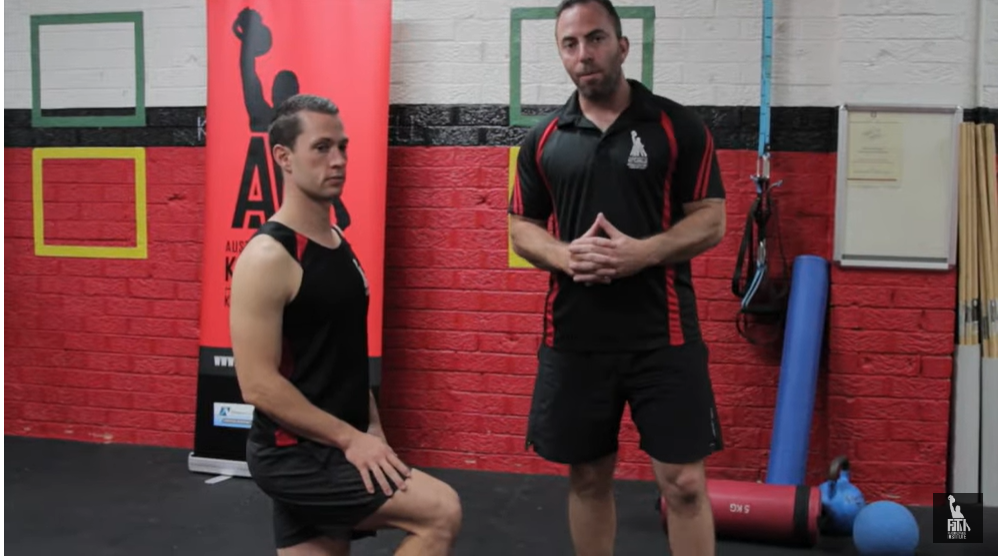Troubleshooting Kettlebell & Powerbag lunges
by Boris Bojanovic
Following on from the last article on Lunges, here are the common issues & how to correct them.
Poor hip/knee stability
This is by far the most common issue we see in lunges. Poor strength & control over hip adduction, caused by weak gluteus medius. This can manifest as either the knee of the front leg collapsing inwards & across the mid-line of the body (as viewed from the front), or as the hip of the front leg poking out to the side.
You should first try to correct this by cueing the client to keep their knee in line with the foot if the knee collapses in. If their hip pokes out make them aware of it by blocking it with your hands or a dowel. Facing your client towards a mirror is a good way to make them aware of this.
Squatting too shallow
There are many reasons for clients not wanting to go deep in a lunge. When they first start lunging they might not have the strength to go deep, in this case regressing back to a split squat with the back knee lightly touching the floor at the bottom is a good option to build leg strength.
Another reason is feeling tension or discomfort in the knee of the back leg as they descend. This is often because they are relying on the back leg too much by sitting back into it. The best way to handle this is to point it out to the client & have them reach their knee forward as they come down into the lunge. It doesn’t have to be a huge forward movement, just far enough that the knee reaches an imaginary line drawn vertically up from the big toe as viewed from the side.
Sitting back into the hips
This one is often seen in female clients who have relatively strong (sometimes just tighter) hamstrings compared to their quads. Their hips shoot backwards, often on the way up from the bottom of the lunge, artificially straightening the knee, thus taking the load off the quads & pushing it all onto the hips/hamstrings.
The way to correct this issue is just as the issue above – sitting into the back leg. You can give the client something to aim for with their front knee, e.g. have them stand with the toes touching a wall & aim the front knee to graze the wall. An upright foam roller works well too.
Breaking it down into a mechanical, un-athletic movement
We’ve all seen these & while there is merit in splitting an exercise into component parts & building it up this takes away a huge component of the lunge. That is the dynamic nature of lunging, which literally means “a sudden forward thrust of the body”. This broken down version is what I would call a split squat – the most basic single leg exercise beginner clients can start with.
To fix this encourage the client to go down in one movement & come up in one movement rather than a 4 step process (1. Step, 2. Lower, 3. Lift, 4. Step).
For for Newsletter

